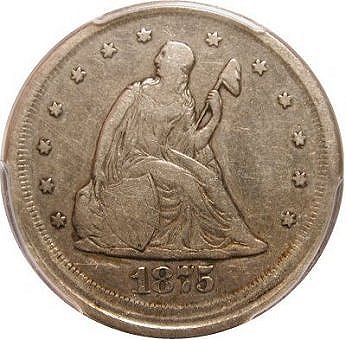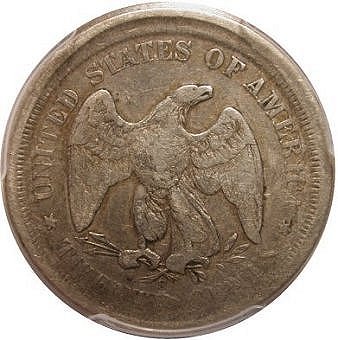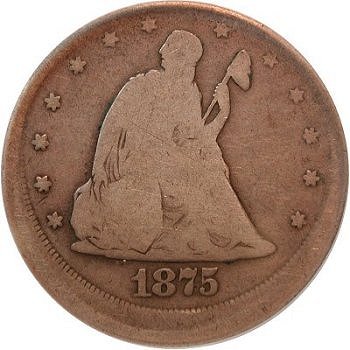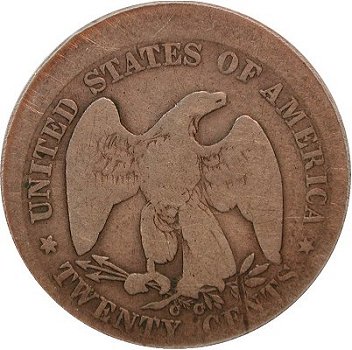7.3 Broadstruck and off-center coins
Broadstruck coins are those that are struck outside of the retaining collar. Without a collar there is nothing to contain the coin as it is struck and the planchet expands to a diameter larger
than that for a coin struck in a collar. Since there is no collar holding the planchet, broadstruck coins can appear centered or uncentered depending on the position of the planchet as the
dies strike the coin.
If the planchet is significantly off to the side when struck, the coin is considered to be struck off-center. Both broadstruck and off-center coins are struck outside of a retaining collar.
The difference between a broadstruck coin and an off-center coin is how much of the original design remains after striking. If all of the design, including the rim and denticles, remain on
the coin, then it is considered broadstruck. If some of the elements are missing, then the coin is referred to as an off-center strike.
Below are two examples of broadstruck coins. The first example is an uncentered broadstruck coin, where all of the design elements are visible and the coin appears slightly uncentered on the planchet.


1875-S uncentered broadstruck coin
The second example below is another uncentered broadstruck coin that also appears to be off-center. This coin illustrates the somewhat difficult task of distinguishing the difference between
these two error types on lower-grade coins. The obverse has the appearance of an uncentered broadstruck coin. The reverse has enough of the design elements missing to be considered an
off-center coin. What may contribute to the difference between the remaining design on both sides is that the dies may have be slightly misaligned during striking.


1875-CC uncentered broadstruck or off-center coin
Both broadstruck and off-center twenty-cent pieces are rare.
